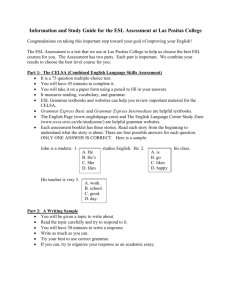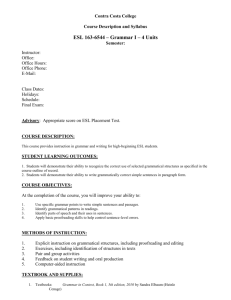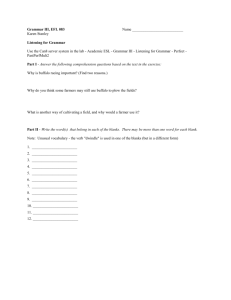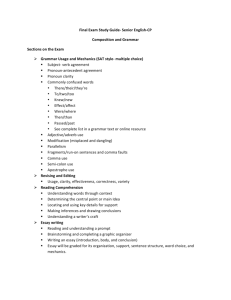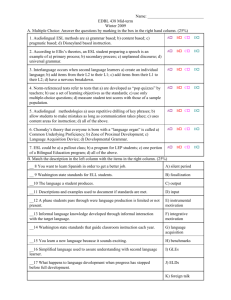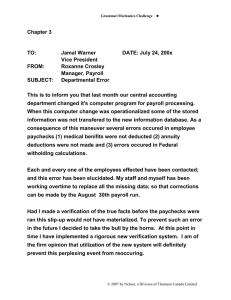Working with Writers of English as a Second Language
advertisement
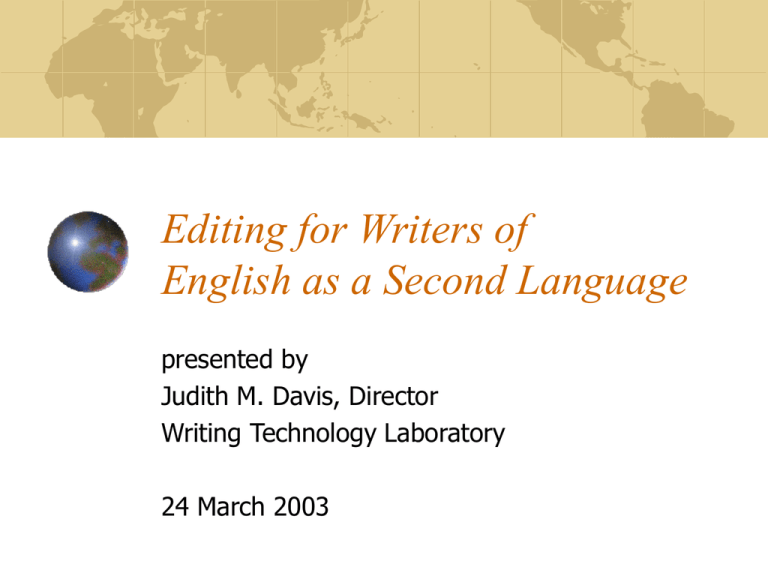
Editing for Writers of English as a Second Language presented by Judith M. Davis, Director Writing Technology Laboratory 24 March 2003 Understand how L1 knowledge may affect L2 usage organization plagiarism word use/idioms grammar, style, and mechanics Organization (adapted from Robert B. Kaplan, “Cultural Thought Patterns in Intercultural Education,” Language Learning 16:15) English Semitic Oriental Romance Russian Organization Recognize American English discourse style Review terms like thesis, topic sentence, paragraph Use outlining to plan and organize Plagiarism Understand that “plagiarism” and “intellectual property” are culturally bound ideas Understand expectations for American academic prose and requirements for documentation Acceptable paraphrase must change both syntax and word choice All words and ideas that are not common knowledge must be documented Visit Research and Documentation Online: http://www.bedfordstmartins.com/resdoc Word Use/Idioms Understand that many English expressions are idiomatic Use an English dictionary for phrasal verb complements Use an ESL dictionary use for expanded definitions and usage tips Visit http://dictionary.cambridge.org/ for links to many dictionaries, including ESL references Grammar, Style, and Mechanics Identify the causes of error: competence (need to learn the rule) • basic grammar knowledge • language acquisition performance (need to apply the rule) • lack of editing awareness/skill • cognitive “stretch” • L1L2 interference • misapplication of rules Use “3-Step” Editing Read aloud Read for “trouble” Read backwards Grammar, Style, and Mechanics Anticipate typical ESL “troublespots”: verbs • agreement • tense • modal + base verbs • gerunds vs. infinitives articles • count vs. non-count nouns • definite vs. indefinite uses Grammar, Style, and Mechanics Anticipate typical ESL “troublespots”: modifiers • adjectives vs. nouns • adverb placement • participles as adjectives (e.g., confused vs. confusing) prepositions • time and place • phrasal verb complements
